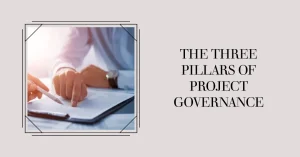Introduction to Activity Time in Remote Work
Activity time refers to the duration allocated to specific tasks or activities within a project. It is a critical component that helps project managers estimate timelines, allocate resources efficiently, and ensure that projects are completed on schedule. In a remote work environment, where teams are often dispersed across various locations, the management of activity time becomes even more significant.
Significance of Activity Time in Project Management
Activity time is essential for several reasons:
- Resource Allocation: Understanding how much time is needed for each task allows project managers to allocate resources effectively, ensuring that team members are not overburdened or underutilized.
- Timeline Estimation: Accurate tracking of activity time helps in creating realistic project timelines, which is crucial for meeting deadlines and maintaining client satisfaction.
- Performance Measurement: By analyzing activity time, managers can assess team performance, identify bottlenecks, and implement improvements where necessary.
Unique Challenges of Remote Work
Managing activity time in a remote work setting presents unique challenges:
- Communication Barriers: The lack of face-to-face interaction can lead to misunderstandings regarding task expectations and timelines, making it difficult to track how much time is being spent on activities.
- Distractions at Home: Remote workers often face distractions that can disrupt their focus and productivity, complicating the accurate tracking of activity time.
- Varied Work Environments: Each team member may have a different work environment, which can affect their productivity levels and the time they dedicate to tasks.
Importance of Managing Activity Time for Productivity and Team Cohesion
Effectively managing activity time is crucial for enhancing productivity and fostering team cohesion in remote teams:
- Boosting Productivity: By implementing strategies to track and manage activity time, project managers can help team members stay focused and organized, leading to increased output.
- Enhancing Team Cohesion: When team members are aware of each other’s activity time and workloads, it promotes transparency and collaboration, which are vital for maintaining a cohesive team dynamic.
Understanding Activity Time Metrics
Effectively measuring and managing activity time is crucial for ensuring productivity and accountability among distributed teams. Here are some key metrics, tools, and best practices to help project managers and team leaders optimize activity time in a remote work environment.
Key Metrics for Measuring Activity Time
- Hours Worked: This fundamental metric tracks the total time team members spend on tasks. It can be recorded through time tracking software, which automates the process and reduces the likelihood of errors associated with manual timesheets. Accurate tracking of hours worked helps in assessing workload distribution and identifying potential bottlenecks in project timelines [15].
- Task Completion Rates: This metric evaluates the percentage of tasks completed within a specified timeframe. By analyzing task completion rates, project managers can gauge team performance and identify areas where additional support or resources may be needed. High completion rates often indicate effective time management and clear communication among team members [9].
- Utilization Rates: This metric measures the proportion of time spent on productive tasks versus total available working hours. A high utilization rate suggests that team members are effectively engaged in their work, while a low rate may indicate inefficiencies or distractions that need to be addressed [8].
Tools and Software for Tracking Activity Time
To effectively manage activity time, project managers can leverage various tools and software designed for remote teams:
- Time Tracking Software: Tools like Toggl, Harvest, and Clockify allow team members to log their hours worked on specific tasks. These platforms often provide reporting features that help managers analyze productivity trends over time [15].
- Project Management Tools: Platforms such as Asana, Trello, and Jira not only facilitate task assignment and tracking but also integrate time tracking functionalities. These tools enable teams to visualize workflows and monitor progress in real-time, enhancing transparency and accountability [3][4].
- Collaboration Tools: Communication platforms like Slack and Microsoft Teams can be integrated with project management and time tracking tools to streamline updates and discussions about activity time. This integration fosters a culture of transparency and keeps everyone informed about project status and individual contributions [6].
Importance of Transparency in Activity Time Reporting
Transparency in activity time reporting is vital for building trust and accountability within remote teams. When team members openly share their activity time metrics, it fosters a culture of collaboration and encourages individuals to take ownership of their work. Here are some best practices to enhance transparency:
- Regular Check-Ins: Schedule daily or weekly meetings to discuss progress, roadblocks, and time management strategies. These check-ins provide an opportunity for team members to share their activity time metrics and receive feedback [10].
- Shared Dashboards: Utilize shared dashboards that display real-time data on hours worked, task completion rates, and overall project progress. This visibility allows team members to understand how their contributions fit into the larger project goals and encourages collective accountability [4].
- Feedback Mechanisms: Implement feedback loops where team members can discuss their time management challenges and successes. This practice not only promotes transparency but also helps identify best practices that can be shared across the team [7].
Best Practices for Managing Activity Time in Distributed Teams
Managing activity time effectively in a remote work environment is crucial for project managers and team leaders overseeing distributed teams. Here are some actionable strategies to enhance productivity and ensure that team members are aligned with project goals:
- Set Clear Expectations and Deliverables: Establishing well-defined expectations and deliverables is essential for remote teams. Clearly communicate project goals, deadlines, and individual responsibilities to ensure that all team members understand what is required of them. This clarity helps prevent misunderstandings and keeps everyone focused on their tasks, ultimately leading to better time management and project outcomes.
- Implement Regular Check-Ins and Updates: Regular check-ins are vital for monitoring progress and maintaining team cohesion. Schedule consistent meetings, whether daily or weekly, to discuss project status, address challenges, and celebrate achievements. These updates not only keep everyone informed but also provide opportunities for team members to seek assistance and share insights, fostering collaboration and accountability.
- Encourage Time-Blocking and Prioritization of Tasks: Time-blocking is a powerful technique that helps team members allocate specific periods for focused work on particular tasks. Encourage your team to prioritize their tasks based on urgency and importance, allowing them to manage their activity time more effectively. By structuring their workday, team members can minimize distractions and enhance their productivity.
- Foster a Culture of Accountability While Avoiding Micromanagement: Building a culture of accountability is essential for remote teams, as it empowers team members to take ownership of their work. Encourage autonomy by trusting your team to manage their time and responsibilities. While it’s important to hold team members accountable for their deliverables, avoid micromanaging, as this can lead to decreased morale and productivity. Instead, focus on providing support and resources that enable your team to succeed.
By implementing these best practices, project managers can effectively manage activity time in distributed teams, leading to improved productivity and successful project outcomes. Emphasizing clear communication, regular updates, structured work habits, and a supportive culture will help remote teams thrive in today’s dynamic work environment.
Leveraging Technology to Enhance Activity Time Management
Effectively managing activity time is crucial for ensuring productivity and meeting deadlines. With teams distributed across various locations, leveraging technology becomes essential to streamline processes and enhance collaboration. Here are some strategies and tools that can significantly improve activity time management for remote teams.
Project Management Software with Time Tracking Features
Utilizing robust project management software is fundamental for remote teams to track activity time efficiently. Here are some notable options:
- Asana: This platform offers features like task assignments, deadlines, and project timelines. Its time tracking capabilities allow teams to monitor how long tasks take, helping to identify bottlenecks and optimize workflows [2].
- Trello: Known for its visual Kanban boards, Trello also supports time tracking through integrations with tools like Harvest. This enables teams to see how much time is spent on each task, facilitating better planning and resource allocation [2].
- ClickUp: This all-in-one project management tool includes built-in time tracking, allowing teams to log hours directly within tasks. ClickUp’s flexibility in managing various project aspects makes it a valuable asset for remote teams [2].
Role of Communication Tools
Effective communication is vital for discussing activity time and ensuring everyone is aligned on project timelines. Tools that facilitate this include:
- Slack: This messaging platform allows for real-time communication and can be integrated with project management tools to receive updates on task progress. Channels can be dedicated to specific projects, making it easier to discuss activity time and address any issues promptly [6].
- Microsoft Teams: Similar to Slack, Teams provides a space for collaboration and communication. Its integration with other Microsoft tools allows for seamless sharing of project timelines and activity reports, ensuring that all team members are informed about their responsibilities and deadlines [6].
Benefits of Automation Tools for Reporting and Analytics
Automation tools can significantly enhance the efficiency of activity time management by streamlining reporting and analytics processes:
- Automated Reporting: Tools like Zapier can automate the transfer of data between project management software and reporting tools, reducing the manual effort required to compile activity reports. This ensures that project managers have up-to-date information on team performance and time allocation [10].
- Analytics Tools: Platforms that offer analytics capabilities can provide insights into how time is being spent across projects. This data can help identify trends, such as which tasks consume the most time, allowing managers to make informed decisions about resource allocation and process improvements [10].
By integrating these technologies into their workflows, remote project managers and team leaders can enhance their ability to manage activity time effectively. This not only improves productivity but also fosters a more collaborative and transparent work environment, essential for the success of distributed teams.
Balancing Flexibility and Productivity
Striking a balance between flexibility and productivity is crucial for the success of distributed teams. As remote work becomes increasingly prevalent, understanding how to manage activity time effectively can lead to improved outcomes for both team members and projects. Here are some key points to consider:
Importance of Work-Life Balance
- Enhancing Well-Being: A healthy work-life balance is essential for remote workers, as it directly impacts their productivity and overall job satisfaction. When team members feel that they can manage their personal and professional lives effectively, they are more likely to be engaged and motivated in their work. This balance helps prevent burnout, which can be detrimental to both individual performance and team dynamics [9].
- Impact on Activity Time: When employees have the flexibility to work in environments that suit their preferences, they can manage their time more efficiently. This flexibility allows them to allocate their activity time to tasks when they are most productive, leading to better quality work and higher output [9].
Strategies for Effective Schedule Management
- Set Clear Expectations: Establishing clear project goals, deadlines, and individual responsibilities is vital. This clarity helps team members prioritize their tasks and manage their schedules effectively. Utilizing project management tools like Asana or Trello can aid in tracking progress and ensuring accountability [13].
- Implement Time-Blocking Techniques: Encourage team members to adopt time-blocking strategies, where they divide their work hours into specific blocks dedicated to particular tasks. This method helps minimize distractions and enhances focus, allowing for more productive use of activity time [14].
- Encourage Regular Check-Ins: Regular check-ins can help maintain alignment among team members and provide opportunities to discuss workload and time management. These meetings can be brief but should focus on progress updates and any challenges team members may be facing [11].
Promoting Asynchronous Communication
- Accommodating Different Working Hours: As remote teams often span various time zones, promoting asynchronous communication is essential. This approach allows team members to contribute and collaborate without the constraints of overlapping schedules. Tools that facilitate asynchronous communication, such as Slack or Microsoft Teams, can help maintain engagement and ensure that everyone is informed, regardless of when they are working [8].
- Utilizing Project Management Tools: Leveraging digital project management tools can enhance communication and collaboration among team members. These tools often include features for file sharing, commenting, and task management, which can help keep everyone in the loop and reduce the need for real-time interactions [7].
By focusing on these strategies, remote project managers and team leaders can create an environment that values flexibility while ensuring that productivity remains high. Balancing these elements is key to fostering a successful remote work culture that benefits both the organization and its employees.
Conclusion
Effectively managing activity time is crucial for ensuring productivity and maintaining team morale. As teams become increasingly distributed across various time zones, the challenges of coordinating schedules and maximizing efficiency become more pronounced. Here are some key takeaways to consider:
- Importance of Managing Activity Time: Proper management of activity time not only enhances productivity but also fosters a sense of accountability among team members. By establishing clear expectations and timelines, project managers can help ensure that all team members are aligned and working towards common goals. This is particularly vital in remote settings where communication can often be fragmented and less frequent [6][12].
- Assess Current Practices: We encourage you to take a moment to evaluate your current strategies for managing activity time. Are your meetings scheduled at convenient times for all team members? Are you utilizing tools that facilitate asynchronous work? Identifying areas for improvement can lead to more effective collaboration and a more engaged team [10][13].
By implementing these best practices and actively participating in discussions, you can enhance your team’s performance and create a more cohesive remote work environment.
Find out more about Shaun Stoltz https://www.shaunstoltz.com/about/.
This post was written by an AI and reviewed/edited by a human.



